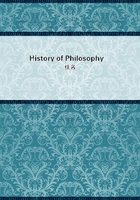
第174章
But if that method be once adopted, the procedure is not immanent development from the speculative Idea, but it follows the mode of external reflection. Schelling's proofs are adduced in such an exceedingly formal manner that they really invariably presuppose the very thing that was to be proved. The axiom assumes the main point in question, and all the rest follows as a matter of course. Here is an instance: “The innermost essence of the Absolute can only be thought of as identity absolute, altogether pure and undisturbed. For the Absolute is only absolute, and what is thought in it is necessarily and invariably the same, or in other words, is necessarily and invariably absolute. If the idea of the Absolute were a general Notion” (or conception), “this would not prevent a difference being met with in it, notwithstanding this unity of the absolute. For things the most different are yet in the Notion always one and identical, just as a rectangle, a polygon and a circle are all figures. The possibility of the difference of all things in association with perfect unity in the Notion lies in the manner in which the particular in them is combined with the universal. In the Absolute this altogether disappears, because it pertains to the very idea of the Absolute that the particular in it is also the universal, and the universal the particular; and further that by means of this unity form and existence are also one in it. Consequently, in regard to the Absolute, from the fact of its being the Absolute, there likewise follows the absolute exclusion from its existence of all difference, and that at once.” (14)In the former of the two above-named works, the “Journal of Speculative Physics,” Schelling began by again bringing forward the Substance of Spinoza, simple, absolute Existence, inasmuch as he makes his starting-point the absolute identity of the subjective and objective. Here, like Spinoza, he employed the method of geometry, laying down axioms and proving by means of propositions, then going on to deduce other propositions from there, and so on. But this method has no real application to philosophy. Schelling at this point laid down certain forms of difference, to which he gave the name of potencies, adopting the term from Eschenmayer, who made use of it (p. 514);(15) they are ready-made differences, which Schelling avails himself of. But philosophy must not take any forms from other sciences, as here from mathematics. With Schelling, the leading form is that which was brought into remembrance again by Kant, the form of triplicity as first, second, and third potency.
Schelling, like Fichte, begins with I = I, or with the absolute intuition, expressed as proposition or definition of the Absolute, that Reason is the absolute indifference of subject and object: so that it is neither the one nor the other, for both have in it their true determination; and their opposition, like all others, is utterly done away with. The true reality of subject and object is placed in this alone, that the subject is not posited in the determination of subject against object, as in the philosophy of Fichte; it is not determined as in itself existent, but as subject-object, as the identity of the two; in the same way the object is not posited according to its ideal determination as object, but in as far as it is itself absolute, or the identity of the subjective and objective. But the expression “indifference” is ambiguous, for it means indifference in regard to both the one and the other; and thus it appears as if the content of indifference, the only thing which makes it concrete, were indifferent. Schelling's next requirement is that the subject must not be hampered with reflection; that would be bringing it under the determination of the understanding, which, equally with sensuous perception, implies the separateness of sensuous things. As to the form of its existence, absolute indifference is with Schelling posited as A = A; and this form is for him the knowledge of absolute identity, which, however, is inseparable from the Being or existence of the same.(16)Thus, therefore, opposition, as form and reality or existence, no doubt appears in this Absolute, but it is determined as a merely relative or unessential opposition: “Between subject and object no other than quantitative difference is possible. For no qualitative difference as regards the two is thinkable,” because absolute identity “is posited as subject and object only as regards the form of its Being, not as regards its existence. There is consequently only a quantitative difference left,”
i.e. only that of magnitude: and yet difference must really be understood as qualitative, and must thus be shown to be a difference which abrogates itself. This quantitative difference, says Schelling, is the form actu: “The quantitative difference of subjective and objective is the basis of all finitude. Each determined potency marks a determined quantitative difference of the subjective and objective. Each individual Being is the result of a quantitative difference of subjectivity and objectivity. The individual expresses absolute identity under a determined form of Being: “so that each side is itself a relative totality, A = B, and at the same time the one factor preponderates in the one, and the other factor in the other, but both remain absolute identity.(17) This is insufficient, for there are other determinations; difference is undoubtedly qualitative, although this is not the absolute determination. Quantitative difference is no true difference, but an entirely external relation; and likewise the preponderance of subjective and objective is not a determination of thought, but a merely sensuous determination.